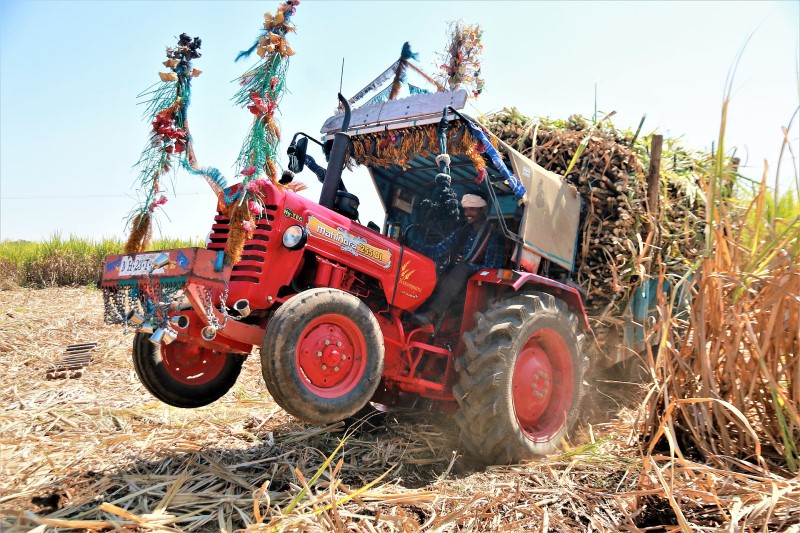India Records High Agricultural Export Growth amidst COVID-19 Pandemic
Divya Murali, Amitendu Palit
14 May 2021Summary
Notwithstanding the COVID-19 pandemic, India’s agricultural exports have shown remarkable growth aided by favourable domestic weather conditions and export curbs implemented by many countries. However, future prospects of these exports depend on how much the latest surge in COVID-19 infections in India affects its agricultural production and global demand conditions.
India’s agriculture exports grew by nearly 18 per cent during April-February fiscal year 2021 (FY21). The growth is unusual given the adverse impact of the COVID-19 pandemic on several sectors of the Indian economy. It indicates that the pandemic induced curbs and lockdowns have not adversely impacted the production and export of agricultural products.
A close look at the export performances of various agricultural commodities for FY21 shows the spectacular growth of a few products that have led the overall growth in exports. The five products in this regard are wheat, vegetable oils, other cereals,1 molasses and nonbasmati rice (Table 1). The growth rates of these five products are striking given that in FY20, other than wheat and vegetable oil exports which had recorded 19 per cent and 61 per cent growth respectively, the rest recorded negative growth rates.2 The exceptionally robust growth in exports of these products has led to their total share increasing by 140 per cent in agricultural exports for FY21.
Table 1: Year-on-year (Y-o-Y) growth of five key products

Source: India Export Statistics, APEDA; http://agriexchange.apeda.gov.in/indexp/18headgenReportmonth_combine.aspx
A key factor behind higher agricultural exports has been good monsoon and weather conditions in FY21 which contributed to a bumper harvest in India. Interestingly, while industrial production and services sectors were hit badly due to labour scarcity created by the lockdown, agricultural production was not impacted, as migrant labourers returned to the rural economy, contributing substantially to crop production. However unlike India, dry weather conditions affected farm outputs in several of India’s competitor countries such as Vietnam, Thailand, Argentina and Brazil enabling Indian agricultural exports to capture larger shares in new markets. Backed by strong domestic supplies, India also did not suffer from any food shortages during its period of lockdown, thereby avoiding the possibility of restricting food product exports and also facilitating exports at globally competitive prices. Also, in order to ensure domestic food security amidst the pandemic, other major agriculture exporting countries implemented export curbs. This was another important factor behind rising agricultural exports from India. For instance, the phenomenal growth in India’s wheat exports is linked to export curbs introduced by Russia – the world’s largest wheat exporter. Domestic food security concerns have also led to stockpiling by countries, including large economies like China. Countries show greater tendency to import and stock under present circumstances, a factor for large exports by India to the United Arab Emirates (UAE), Malaysia, the Netherlands and the United Kingdom (UK) [Table 1]. The pandemic has also helped India to augment exports to neighbouring countries in South Asia, through government-to-government contracts, such as to Afghanistan. While unrelated to COVID-19, the ongoing political strife in Myanmar has diverted grain demand of Southeast Asia towards India as seen from high other cereals and molasses exports to Vietnam, Thailand, Malaysia and the Philippines.
Buoyed by rising global food prices in the later months of 2020 with countries coming out of lockdowns and lifting the curbs imposed on trade, Indian agricultural exports have benefitted from favourable prices. Going ahead, sustaining the trend will depend on India’s internal situation and global demand conditions. The latest surge in COVID-19 cases in India poses high risks in this regard. Export prospects would also depend on whether countries continue to maintain export restrictions and trade curbs.
. . . . .
Ms Divya Murali is a Research Analyst at the Institute of South Asian Studies (ISAS), an autonomous research institute at the National University of Singapore (NUS). She can be contacted at divya.m@nus.edu.sg. Dr Amitendu Palit is a Senior Research Fellow and Research Lead (Trade and Economic Policy) at ISAS. He can be contacted at isasap@nus.edu.sg. The authors bear full responsibility for the facts cited and opinions expressed in this paper.
Photo credit: Wikipedia
1 These include rye, barley, oats, maize, other maize, sorghum, jowar, buck wheat, bajra, ragi and canary seed.
2 Growth rates computed by the authors using data from the Agriculture and Processed Food Products Export Development Authority (APEDA), http://agriexchange.apeda.gov.in/indexp/18headgenReportmonth_combine.aspx .
-
 More From :
More From :
-
 Tags :
Tags :
-
 Download PDF
Download PDF


